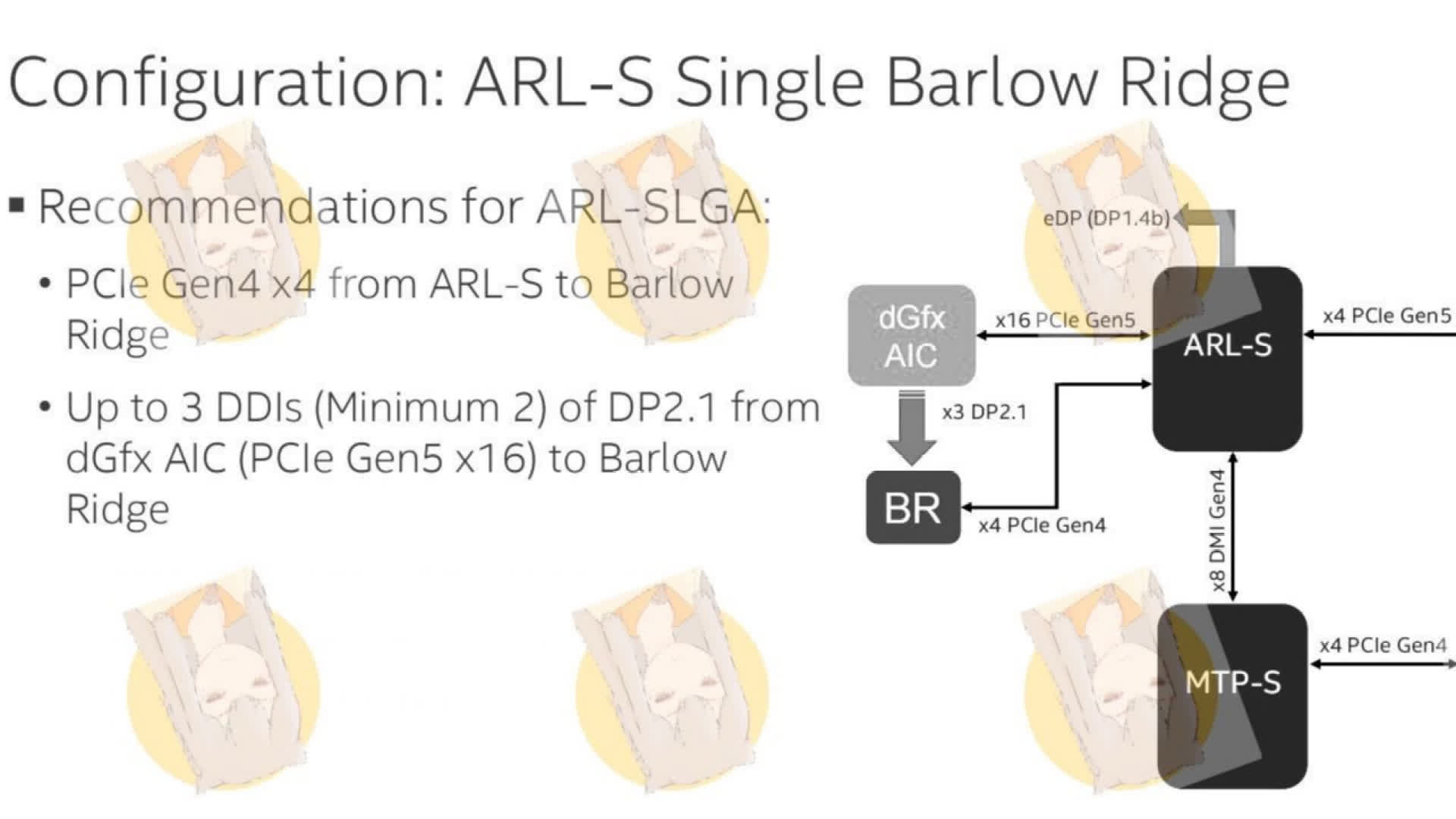Forward-looking: Intel has yet to reveal the full details of its 15th-generation Arrow Lake desktop CPUs. However, it’s reasonable to predict that they will add support for the company’s new Thunderbolt 5 interface which combines USB4 v2 and DisplayPort 2.1 standards. Recently leaked documents suggest that the new Thunderbolt will make its desktop debut through Arrow Lake and could include enough bandwidth to fully utilize PCIe 5.0 components.
Internal Intel documents, referenced in a now-deleted tweet from leaker @yuuki_ans, indicate that Arrow Lake – the company’s next-gen desktop processors – will support Thunderbolt 5. This development could position Arrow Lake desktops as the first to enable 120 Gbps data transfer speeds under specific scenarios.
Last September, Intel said that developers could start working with Thunderbolt 5 sometime this year. The interface doubles the maximum bandwidth of Thunderbolt 4, offering 80 Gbps bidirectional connections. However, on some devices, it can transmit data at 120 Gbps while receiving at 40 Gbps. Thunderbolt 5 also supports 240W charging, dual 4K 144Hz signals, multiple 8K signals, up to three DisplayPort 2.0 streams, and a theoretical maximum refresh rate of 540Hz at lower resolutions.
I think the popularization of tbt5 will start in 2026 …
– �”åÂÂå®Â�–YuuKi_AnS (@yuuki_ans) January 23, 2024
A few companies showcased docks supporting Thunderbolt 5 earlier this month. However, the timeline for its appearance on desktops remains unclear. Intel expects it to first gain popularity with gamers and content creators using it for external GPUs, then with workstations. Meanwhile, @yuuki_ans predicts that adoption could ramp up starting from 2026.
The leaked documents, archived by Tom’s Hardware before deletion, explicitly mention Thunderbolt 5’s Barlow Ridge controller in a diagram outlining Arrow Lake. This is the first official reference to Thunderbolt 5 in desktop systems.

Another noteworthy detail revealed in the documents is that Arrow Lake will feature up to 20 PCIe 5.0 lanes. Intel’s current Raptor Lake processors support only 16, which is insufficient for fully utilizing a PCIe 5.0 graphics card and a PCIe 5.0 SSD simultaneously, as this forces the two components to share bandwidth. The additional lanes could lead to enhanced performance in recent high-end SSDs.
Further leaked information from @yuuki_ans suggests that Arrow Lake might abandon Hyper-Threading, a staple of PC processors for about two decades. While high-end gaming performance likely wouldn’t suffer, this change could impact other processes that heavily rely on multiple threads. The 15th-gen Intel CPUs might also support DDR5-6400 memory.
Arrow Lake CPUs are expected to launch in the second half of 2024 using the Intel 20A (2nm) process node.

